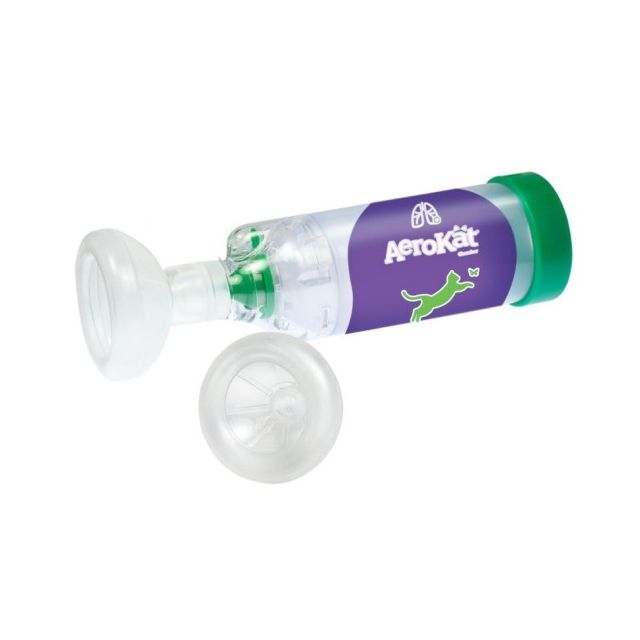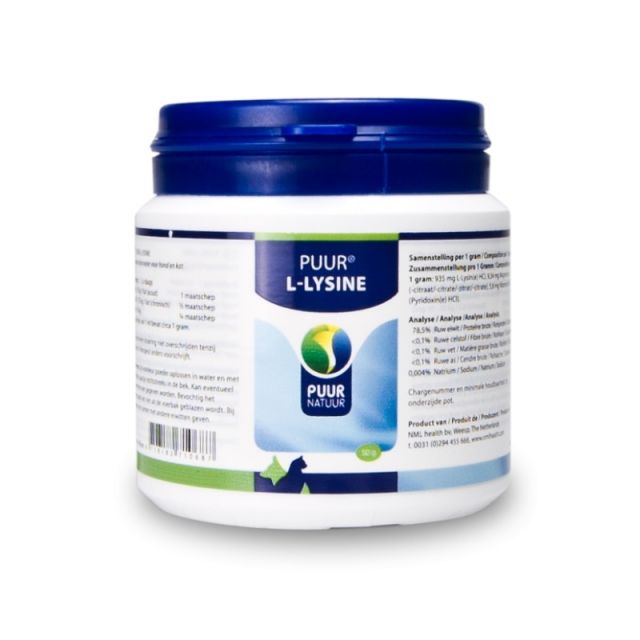The cat's respiratory tract
Sneezing, a runny nose, coughing, feeling congested; the symptoms of respiratory diseases in the cat can be similar to those in humans. A cold in cats is common and is usually caused by feline herpesvirus (FHV-1) or feline calicivirus (FCV). Some cats get it once, while others are frequently plagued by colds throughout their lives. Coughing, for example, can be caused by asthmatic bronchitis, lungworm, or heart failure, but also by a blade of grass stuck in the throat! Pharmacy4pets helps you keep your cat's airways in top condition.
Symptoms of Respiratory Diseases
You can often recognize a respiratory condition in cats by one or more of the following symptoms:
- Sneezing.
- Nasal discharge.
- Stuffy nose.
- Inflamed eyes (tearing, redness, squinting).
- Fever.
- Coughing.
- An abnormal sound with breathing (such as sniffling, snoring, wheezing, rattling).
- Shortness of breath.
- Altered breathing: faster, shallower, deeper, with more abdominal pressure.
- Red, pale, or bluish discoloration of the tongue.
- Reverse sneezing: a backward sneeze, where the soft palate flips backward, blocking the airway during breathing.
- Gagging/throat clearing.
- Excessive saliva production.
- Decreased appetite.
- Inflamed gums or oral mucosa.
- Lethargy.
- Reduced or inability to run or play.
- Panting: breathing with an open mouth.
If your cat exhibits symptoms of a respiratory disease, it is always advisable to have her examined by your veterinarian. If your cat is short of breath, you should immediately contact your veterinarian.
Cold in Cats: Feline Viral Rhinotracheitis (FVR)
A common cause of a cold in cats is feline viral rhinotracheitis (FVR). Although sneezing is indeed common in cats with a cold, a cold in cats can also manifest with inflamed eyes, inflammation of the gums and oral mucosa, coughing, a runny nose, or a sore throat. FVR is caused by one or more viruses. Symptoms can be exacerbated by bacteria. Cats of all ages can get FVR. Like with other infectious diseases, the likelihood of contracting this disease is higher in kittens and in cats that live in large groups. FVR is also frequently seen in stray cats.
The severity of the symptoms can vary greatly. Cats can carry the virus without being sick or only have some sneezing and watery nasal discharge. But they can also be severely short of breath and even die from the disease. Cats can be vaccinated against FVR. This reduces the risk of them catching a cold, and if they do get FVR, the symptoms are usually milder in vaccinated cats. Some cats with FVR continue to have (recurrent) symptoms throughout their lives. There is actually no treatment for FVR itself, as it is caused by a virus. For cats that are very ill or have a stuffy nose, supportive treatment may be necessary (such as antibiotics, eye ointment, anti-inflammatory drugs, force-feeding or administering food via a tube, fluid therapy, nasal drops, etc.).
Steaming can help dissolve mucus stuck in the nose or throat. Take your cat to the bathroom when you shower for this purpose. Close the door so that there is plenty of steam in the bathroom. Of course, do not take the cat into the shower. L-lysine is sometimes recommended for FVR. Its effectiveness has not yet been conclusively proven, but given the safety of the product, it is definitely worth trying in cats with chronic problems.
Coughing in Cats
Coughing can have various causes, such as a cold, a sore throat, bronchitis, or be caused by fluid in the lungs or chest cavity due to heart failure. Coughing is NEVER normal, and if your cat coughs regularly, this is always a reason for a visit to the veterinarian. Especially if your cat is also more lethargic than usual, breathing is abnormal, your cat is sick or short of breath, waiting is not advisable. We are happy to tell you about the most common causes of coughing.
A Blade of Grass in the Throat
Cats often eat grass. Because grass is sharp, it irritates the stomach, which can cause vomiting. Sometimes, when vomiting, a blade of grass 'shoots' the wrong way and sticks to the palate. This causes acute and continuous coughing and gagging. Cats with a blade of grass in their throat swallow excessively, stretch out their throat, and sometimes scratch their mouth with their paw in an attempt to get rid of the blade of grass. Very unpleasant, but fortunately easily resolved by having the blade of grass removed by your veterinarian under sedation.
Asthma or Bronchitis in Cats
Many cats that cough regularly have chronic bronchitis or asthma. Both conditions involve inflammation of the deeper airways. The bronchi are narrowed, and mucus production is increased. The diagnosis is made based on the clinical symptoms, findings on physical examination (listening to the lungs), an X-ray, and possibly additional tests. Both asthma and bronchitis can be caused or exacerbated by a reaction to irritating substances. Examples include cigarette smoke, fireplace smoke, scented candles, plug-in air fresheners, strongly scented flowers, deodorant/perfume, and scented or dusty cat litter. Sometimes, no longer being exposed to the aforementioned items is advisable to relieve coughing. Obesity is also a significant factor in bronchitis and asthma. If your cat is overweight, helping her lose weight, for example, with Sanimed Weight Reduction, can literally give her more air.
However, in chronic bronchitis, the airways are permanently altered, and even after optimizing conditions, treatment will still be necessary. Anti-inflammatory drugs are often needed lifelong to suppress inflammation in the deeper airways. Nearly all people with chronic bronchitis receive this medication by inhalation, as it has far fewer side effects. This can also be done in cats with an AeroKat inhalation system. However, this requires training and commitment from the owner.
Respiratory Issues Due to Lungworm
A cat can contract lungworms by ingesting the larvae of the worm through snails, rodents, mice, or birds. An infection with lungworms often causes few symptoms, but it is important to treat these worms to prevent serious symptoms. Symptoms of a severe infection include coughing, shortness of breath, and weight loss. The diagnosis can be made by detecting larvae in the feces using the Baermann method. Cats with lungworms can be treated with spot-ons such as Advocate or Profender.
Respiratory diseases are unpleasant for your cat. The symptoms can range from sneezing to severe shortness of breath. It is important to contact your veterinarian if you suspect a respiratory disease so that the correct diagnosis can be made quickly, and your cat can breathe 'easily' again. If you have any questions about our products or your cat's respiratory system, please contact us here.




